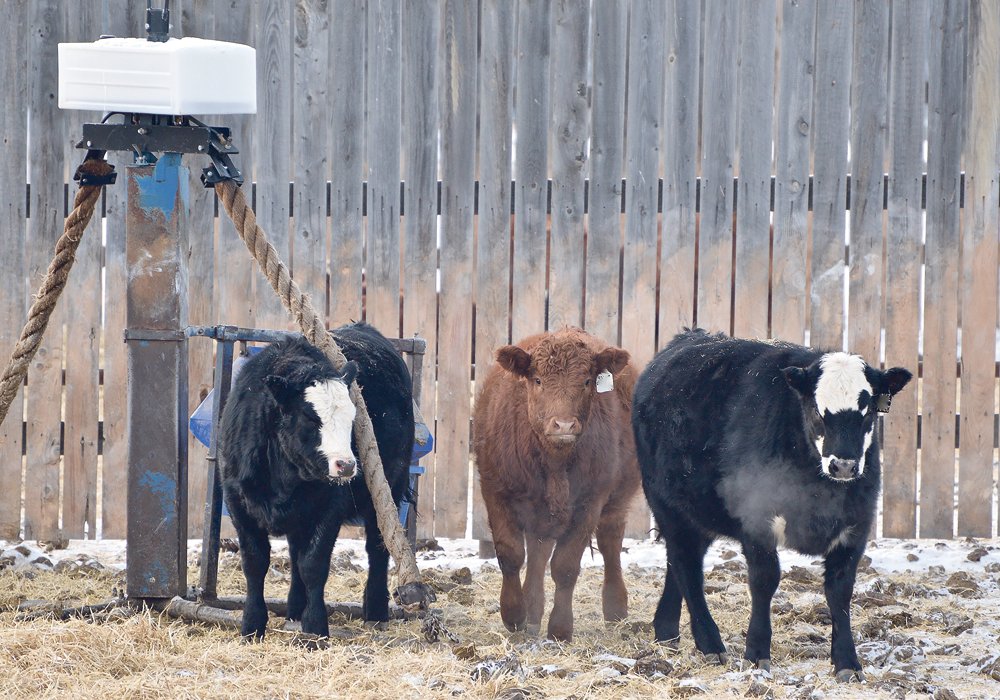A researcher from the University of California says fossil fuels continue to be the main greenhouse emissions culprit
Agriculture contributes to climate change but it is not the main villain compared to emissions from other industries.
“Agriculture has been the scapegoat for a long time and I think it is really time for that to change,” said Frank Mitloehner of the University of California, Davis. A long-time defender of agriculture and its contribution to climate change, he is director of the CLEAR Center, which stands for Clarity and Leadership for Environmental Awareness and Research.
“Agriculture and forestry are the only two sectors of society that help us to take out more carbon than they put into the atmosphere,” he said during the Alberta Farm Animal Care annual meeting held on online March 19.
Read Also

Farming Smarter receives financial boost from Alberta government for potato research
Farming Smarter near Lethbridge got a boost to its research equipment, thanks to the Alberta government’s increase in funding for research associations.
Many people in agriculture feel that climate change is a fake topic.
“Climate change is real and I think human activity has something to do with the changing climate and even agriculture affects the climate,” he said.
Certain groups blame animal agriculture but the main human cause is the burning of fossil fuels.
The three main contributors to greenhouse gas emissions come from transportation, electricity and industry at about 80 percent of all emissions.
In his AFAC talk, Mitloehner provided a basic science lesson about different emissions and their impacts on the atmosphere and climate.
A blanket of greenhouses gases like carbon dioxide, methane and nitrous oxide hold solar heat on the earth.
“The more greenhouse gases there are, the thicker the blanket,” he said.
These gases are different in terms of heat trapping ability. Methane is 30 times more heat trapping than carbon dioxide. Nitrous oxide is almost 300 times more heat trapping.
Carbon dioxide and nitrous oxide are long lived climate fluids and could remain in the atmosphere for hundreds of years. Soils, plants and the ocean absorb some but more is being emitted than can be taken in.
Methane is different. It is a short-lived gas and has a lifespan of about a decade.
“The amount of methane produced and destroyed globally and in North America is almost equal,” he said.
Fossil fuels, livestock and waste, biomass, wetlands and other natural emissions send about 560 terragrams into the atmosphere but almost the same amount is destroyed. A terragram is one million tonnes.
The main source of methane emissions is animal agriculture. The biogenic carbon cycle breaks down methane.
“The resulting CO2 after oxidation of methane is not new carbon added to the atmosphere. It is merely recycled carbon, which originated in the atmosphere before plants took it in through photosynthesis,” he said.
Oxford University developed a new method for calculating methane emissions. It shows a rise in methane releases would result in a significant increase in warming in the atmosphere.
If methane decreased by 10 percent, the current quantification method says the warming may still occur, but if herd sizes remain about the same, methane is reduced so there is no increase in atmospheric warming.
“As long as livestock herds remain constant and the amount of methane produced and the amount of methane destroyed (through oxidation) remains the same. Constant livestock herds do not add additional carbon or methane to the atmosphere and hence constant livestock herds do not add additional warming to our climate,” he said.
It is possible to reduce methane without hardship.
The California legislature passed a new law to reduce methane emissions by 40 percent by 2030. A financial partnership with beef and dairy operations to support methane reduction provided US$500 million to support methane reduction of industries. There has already been a 25 percent reduction with activities like anerobic biodigestors on dairies and investing in new farm practices.
Beef Cattle Research Council research found that producing the same amount of beef in 2011 produced 15 percent less greenhouse gases than in 1981.
More than 78 percent of emissions came from the cow-calf sector. Breeding herds consume mostly forage-based diets that produce more methane than grain-based diets.
Methane comes from rumen micro-organisms called methanogens under anaerobic conditions (without oxygen) in both the animal and manure.
Carbon dioxide emissions from beef production total about five percent and come mostly from burning fossil fuels.
Nitrous oxide has a much higher global warming potential than either methane or carbon dioxide. These emissions arise from manure and cropland and account for about 25 percent of total emissions from Canadian beef production.
Nitrous oxide emissions are increased when the level of protein in the diet exceeds the animal’s nutritional requirements or if the amount of nitrogen applied to land exceeds what is required for the crop.
Balancing the diet to meet protein requirements and soil tests to ensure that manure application does not exceed crop nitrogen requirements are two of the most effective methods of reducing nitrous oxide emissions from beef production systems. However, because beef manure is typically applied to the land fresh, the anaerobic conditions necessary for methane production are impaired. Therefore, beef manure only accounts for about five percent of emissions.


















